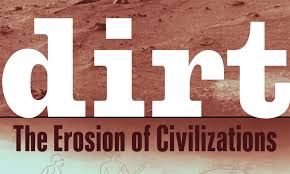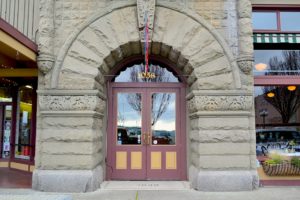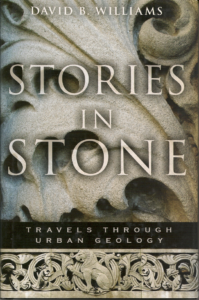
About the talk
Dirt, soil, call it what you want—it’s everywhere we go. It is the root of our existence, supporting our feet, our farms, our cities. This fascinating yet disquieting book finds, however, that we are running out of dirt, and it’s no laughing matter. An engaging natural and cultural history of soil that sweeps from ancient civilizations to modern times, Dirt: The Erosion of Civilizations explores the compelling idea that we are—and have long been—using up Earth’s soil. Once bare of protective vegetation and exposed to wind and rain, cultivated soils erode bit by bit, slowly enough to be ignored in a single lifetime but fast enough over centuries to limit the lifespan of civilizations. A rich mix of history, archaeology and geology, Dirt traces the role of soil use and abuse in the history of Mesopotamia, Ancient Greece, the Roman Empire, China, European colonialism, Central America, and the American push westward. We see how soil has shaped us and we have shaped soil—as society after society has risen, prospered, and plowed through a natural endowment of fertile dirt. David R. Montgomery sees in the recent rise of organic and no-till farming the hope for a new agricultural revolution that might help us avoid the fate of previous civilizations.
About the speaker

David Montgomery is a Professor of Geology at the University of Washington’s Department of Earth and Space Sciences. He was selected as a MacArthur Fellow in 2008, based on his exceptional creativity, significant accomplishment and potential for subsequent creative work.


 The geologic history of the Mount Baker Volcanic Field is now well documented for the past 3-4 million years. The ice-mantled cone of Mount Baker is but the youngest in a long series of eruptive centers, which includes two calderas (large eruptive cauldrons). The past 10,000 years (the Holocene) has seen a decrease in “constructional” lava flows.
The geologic history of the Mount Baker Volcanic Field is now well documented for the past 3-4 million years. The ice-mantled cone of Mount Baker is but the youngest in a long series of eruptive centers, which includes two calderas (large eruptive cauldrons). The past 10,000 years (the Holocene) has seen a decrease in “constructional” lava flows. About the Speaker
About the Speaker
 Most people do not think of looking for geology from the sidewalks of a major city, but for the intrepid traveler, any good rock can tell a fascinating story. All one has to do is look at building stone in any downtown business district to find a range of rocks equal to any assembled by plate tectonics. Furthermore, building stones provide the foundation for constructing stories about cultural as well as natural history.
Most people do not think of looking for geology from the sidewalks of a major city, but for the intrepid traveler, any good rock can tell a fascinating story. All one has to do is look at building stone in any downtown business district to find a range of rocks equal to any assembled by plate tectonics. Furthermore, building stones provide the foundation for constructing stories about cultural as well as natural history.